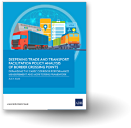Linking Asia and Latin America through trade agreements
Growing Asia-Latin America Ties
The time seems ripe for more South-South inter-regional cooperation. While Korean food may be notoriously hard to pair with wine, Chilean wines are now regular features at the Korean dinner table served alongside popular Korean dishes. In fact, Chile has been the leading wine supplier in the Republic of Korea since 2008. Other Chilean agricultural products such as grapes and pork have also become a familiar sight in Korean grocery stores and markets. If Chilean wines and agricultural products have conquered the Korean palate, the same is true of Korean companies taking up over 30% and 60 to 70% of Chile’s automobile and electronics markets, respectively.
The success of the Republic of Korea and Chile in gaining a foothold in each other’s markets can be attributed to the Republic of Korea-Chile free trade agreement (FTA) which took effect in 2004, the first Asia-Latin America inter-regional FTA. Within a 10-year period, the Republic of Korea undertook to eliminate tariffs on 93.6% of its tariff lines while Chile committed to liberalize 96.5% of its tariff lines. The impact of goods liberalization is remarkable. Trade volume between the two countries surged from US$ 1.85 billion in 2003 to US$ 7.24 billion last year.
Expanding Republic of Korea-Chile trade relations aptly illustrates the recent phenomenon of Asia-Latin America inter-regional trade integration and the resulting gains amidst the backdrop of a sluggish world economy. Before 2000 there was limited economic interaction between Asia and Latin America both in terms of actual trade and free trade agreements (FTAs). Starting in the early 2000s, however, total trade growth between the two regions accelerated (Figure 1). The 2008 global financial crisis briefly disrupted Asia-Latin America trade growth, but a resurgence is underway. Market-led integration has been followed by growing economic cooperation through FTAs. Since the first Asia-Latin America FTA emerged in 2004, an average of two FTAs have taken effect every year between countries of the two regions, bringing the total number in effect to 20 at end of June 2012 (Figure 2).
Evaluating Asia-Latin America Trade Agreements
Our recent ADBI Working Paper assessed the scope and depth of the 20 Asia-Latin America FTAs using an inter-disciplinary approach blending concepts in international law with international economics. We looked at goods liberalization, liberalization of services trade and new issues typically beyond the WTO framework. Following the WTO criteria on the scope and speed of liberalization of trade in goods, we found that 16 out of the 20 Asia-Latin America FTAs have a relatively fast approach to tariff liberalization, which means that these FTAs eliminate 85% of tariff lines within 10 years. It is noteworthy, however, that some Asia-Latin America FTAs also contain temporary or permanent exclusions lists. For instance, although tariff liberalization of the 2007 Japan–Chile Economic Partnership Agreement is relatively fast, about 30 lines are subject to tariff quotas, including meat, rice, and fish products, primarily tuna.
We also found that Asia-Latin America FTAs liberalize several major service sectors (such as business, communications, transportation, financial services, tourism and education). However, an improvement in services coverage may be useful in future FTAs as some sub-sectors of these major services are excluded from coverage of key obligations (such as national treatment, local presence and market access). In the case of Taipei, China–Panama FTA of 2004, Panama excludes the education sector and sub-sectors in tourism and communications while Taipei, China excludes internal waterway transport, cabotage and pilotage under transport services.
Finally, we found variations across agreements in the inclusion of new issues defined here as the so-called Singapore Issues (trade and investment, trade and competition policy, transparency in government procurement, and trade facilitation) and provisions on intellectual property rights (IPRs). For instance, nine FTAs have investment chapters that contain strong commitments on both liberalization and protections. Eighteen agreements have a customs procedure chapter or provisions on trade facilitation. Intellectual property is dealt with in 13 FTAs and all have one or more TRIPS-plus provisions. Nine agreements have government procurement chapters and six of these cover obligations going beyond the Government Procurement Agreement (GPA). Less encouraging, however, few Asia-Latin America agreements contain provisions on competition.
Priorities for Future Asia-Latin America FTAs
Our evaluation of Asia-Latin America FTAs suggests that progress has been made in reducing trade and regulatory barriers, but more needs to be done in future FTAs to solidify and expand the process of deep integration between the two regions. Further improvement is needed in five key policy areas to make future inter-regional FTAs more effective as a liberalizing instrument. These include promoting deep integration FTAs, forming a comprehensive inter-regional FTA, raising FTA use by business, addressing overlapping rules of origin (also known as the “noodle bowl” problem), and pursuing domestic structural reforms. Strong partnerships between government, business, and regional institutions are vital to design and implement this ambitious policy agenda.




